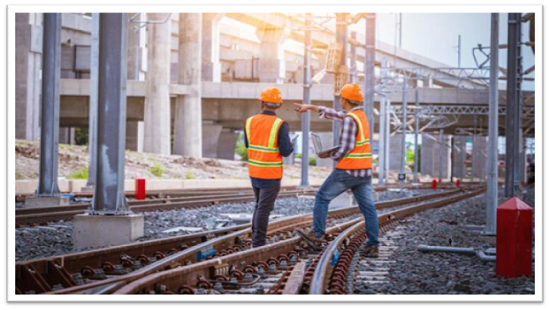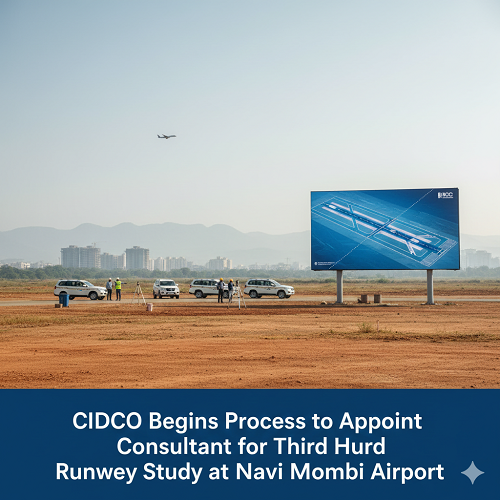
Panvel–Karjat Railway Line Nears Completion: A Game-Changer for Mumbai’s Expanding Suburban Network
The Mumbai Metropolitan Region (MMR) is on the verge of a transformative connectivity milestone. The Panvel–Karjat suburban railway corridor, a pivotal addition under the Mumbai Urban Transport Project (MUTP) Phase III, is rapidly nearing completion. With nearly 79% of work accomplished, this ambitious 29.6-kilometre line — developed by the Mumbai Railway Vikas Corporation (MRVC) at a cost of ₹2,782 crore — aims to reshape the suburban travel landscape between Navi Mumbai and Karjat.
The corridor is more than just a new railway link; it represents a structural shift in how the region moves, lives, and grows. Designed to alleviate pressure on the congested Central Railway network, the line will serve as a parallel route connecting emerging residential and commercial hubs. Once operational, it will drastically cut travel time, improve network efficiency, and catalyze regional development across Mumbai’s eastern periphery — particularly in the rapidly growing Raigad district.
Building the Backbone of Future Connectivity
Developed by MRVC, the Panvel–Karjat suburban corridor is designed to ease the persistent congestion on the Central Railway’s main line, which carries one of the highest passenger densities in Asia. It will function as a crucial link between Mumbai’s urban hub and its expanding hinterland, offering faster, more reliable travel for thousands of daily commuters.
Once operational, the corridor will reduce travel time between Panvel and Karjat by up to 30 minutes — a significant benefit for those travelling from Karjat, Bhivpuri, Neral, and Khopoli to workplaces in Navi Mumbai, Thane, and Mumbai. By improving access to employment and education centers, the project is expected to enhance both productivity and quality of life.
Infrastructure Highlights: Engineering with Precision
The corridor’s design reflects both engineering expertise and urban foresight. The project encompasses:
• 9 major bridges and 35 minor bridges to maintain connectivity across complex terrain.
• 15 underpasses and one rail flyover to enhance safety and reduce road congestion.
• Three fully excavated tunnels, marking a key engineering achievement in the project timeline.
Track-laying work has already begun, signifying the transition from civil works to operational readiness. While the original completion target was December 2025, the project’s commissioning is now projected for March 2026 — a pragmatic adjustment given the scale of ongoing metropolitan infrastructure development.
Five New Stations to Anchor Growth
The line will include five stations — Panvel, Chikhale, Mohape, Chowk, and Karjat — each positioned to serve as a catalyst for local growth. These new suburban nodes are expected to anchor future urban expansion by attracting housing developments, commercial enterprises, and small-scale industries.
Importantly, the corridor complements other landmark infrastructure initiatives such as the Navi Mumbai International Airport, the Mumbai Trans Harbour Link (MTHL), and Metro Line 3. Together, these projects are redefining the geography of the Mumbai Metropolitan Region, creating a more interconnected and resilient cityscape.z
Socio-Economic Impact: Beyond Mobility
The Panvel–Karjat suburban line is not just a transport project — it is an economic accelerator. By easing passenger pressure on the Central Railway’s main line, it will enhance reliability and comfort for over eight million daily suburban passengers. The project is also expected to stimulate balanced regional growth by improving accessibility and reducing the city’s core congestion.
Affordable land prices along the corridor, particularly around Chikhale, Mohape, and Chowk, are likely to attract new residential investments. This shift will encourage transit-oriented development and provide sustainable housing alternatives closer to emerging business districts in Navi Mumbai.
The corridor’s impact extends to local industries in Raigad district as well, where improved logistics and workforce mobility can strengthen the region’s position within the Mumbai–Pune industrial corridor. The multiplier effect — in terms of jobs, small businesses, and infrastructure demand — is expected to generate substantial long-term value.
A Vision Aligned with Sustainable Urban Expansion
In an era when megacities are rethinking mobility through the lens of sustainability, the Panvel–Karjat line stands out as a model of responsible infrastructure growth. The suburban rail system — powered by electric traction — is one of the cleanest, most efficient public transport modes globally, helping cut carbon emissions and reduce urban road traffic.
By redistributing commuter flows and supporting compact urban growth, the project advances the Government of India’s “ease of living” and sustainable development goals. It also aligns seamlessly with MUTP Phase III’s mission to modernize Mumbai’s suburban network through capacity expansion, upgraded signaling, and improved commuter facilities.
Laying the Tracks for Inclusive Growth
As of late 2025, MRVC has reported that major civil works — including bridges, tunnels, and station structures — are nearing completion. Electrification, signaling, and system integration will follow in early 2026, paving the way for trial runs. Once operational, the Panvel–Karjat corridor will represent more than the completion of an engineering project; it will mark a shift toward a more inclusive and connected Mumbai Metropolitan Region.
The corridor exemplifies how infrastructure can shape social and economic outcomes. It connects opportunity with accessibility, industry with talent, and urban centers with emerging growth zones. As the first trains begin running, they will carry more than commuters — they will carry the promise of balanced, sustainable urbanization.
The Panvel–Karjat suburban railway line stands as a strategic investment in mobility and metropolitan resilience. Its completion will not only decongest existing routes but also open new economic frontiers, connecting communities, jobs, and growth corridors across the region. In essence, it is more than a railway project — it is a blueprint for how infrastructure can drive inclusive, sustainable, and forward-looking urban development in one of the world’s most dynamic city regions.




